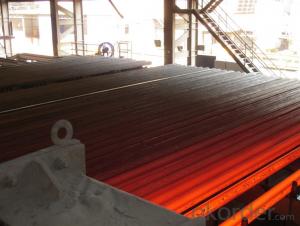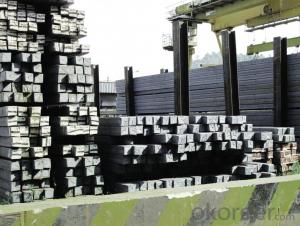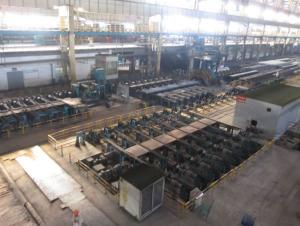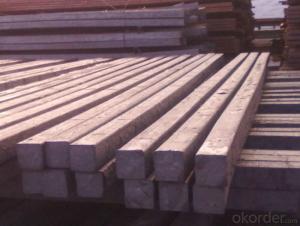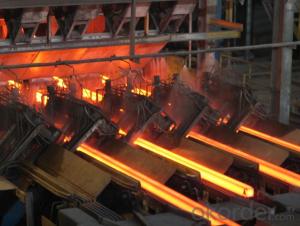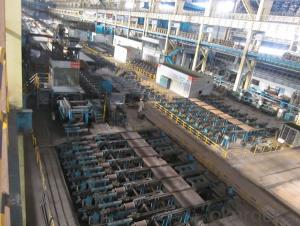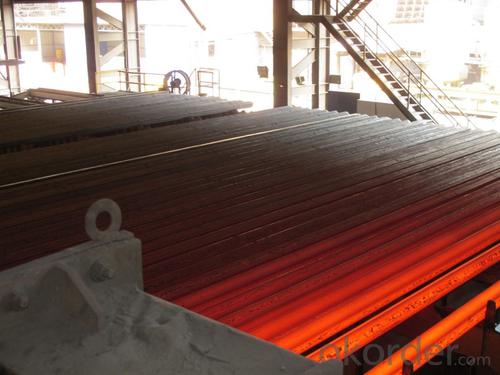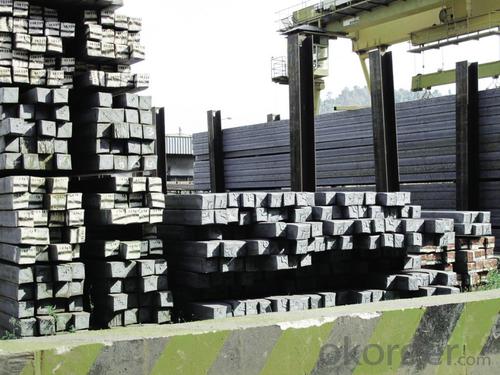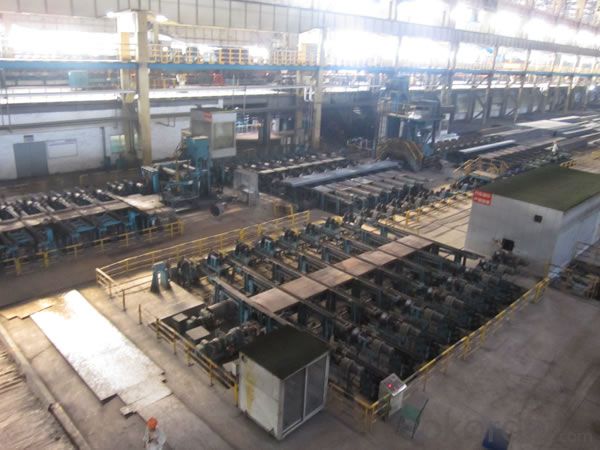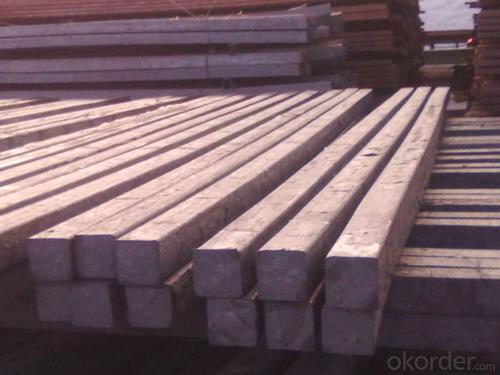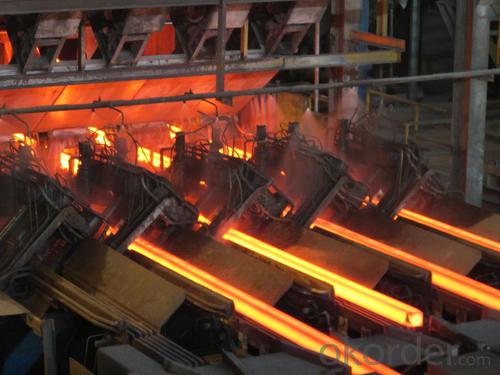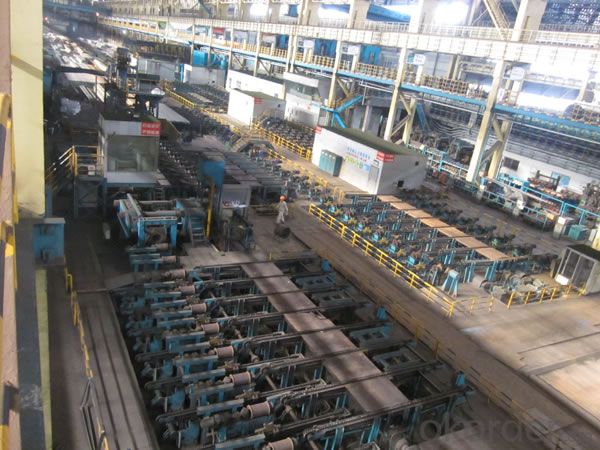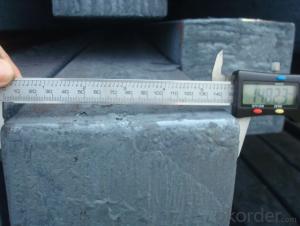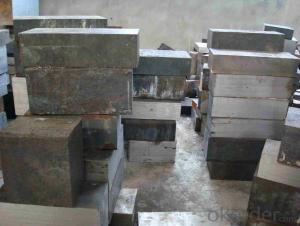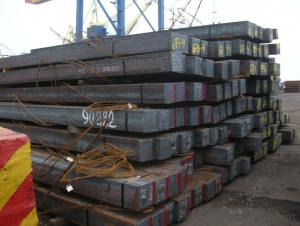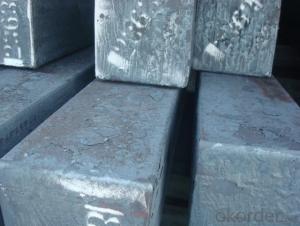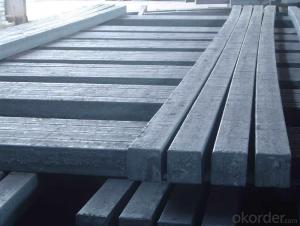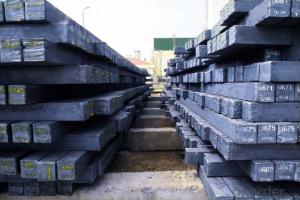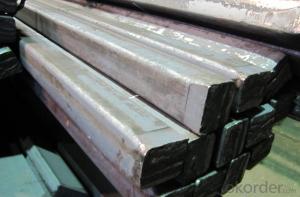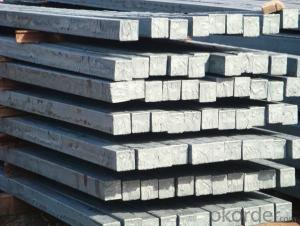Square Steel Billet Q235/3SP Grade Prime Quality 10#
- Loading Port:
- Tianjin
- Payment Terms:
- TT OR LC
- Min Order Qty:
- 2000 m.t
- Supply Capability:
- 50000 m.t/month
OKorder Service Pledge
OKorder Financial Service
You Might Also Like
Description of Square Steel Billet Q235/3SP Grade Prime Quality 10#
M. S. Billets are used for rolling of TMT Re-Bars of Fe415 and Fe500 Grade and various other structural steel products.
CRS Billets are used for rolling of CRS TMT Re-Bars.
Special Alloy Billets are used for rolling of any special grade TMT Re-Bars like Earthquake resistant TMT Re-Bars and for special grade structural steel products.
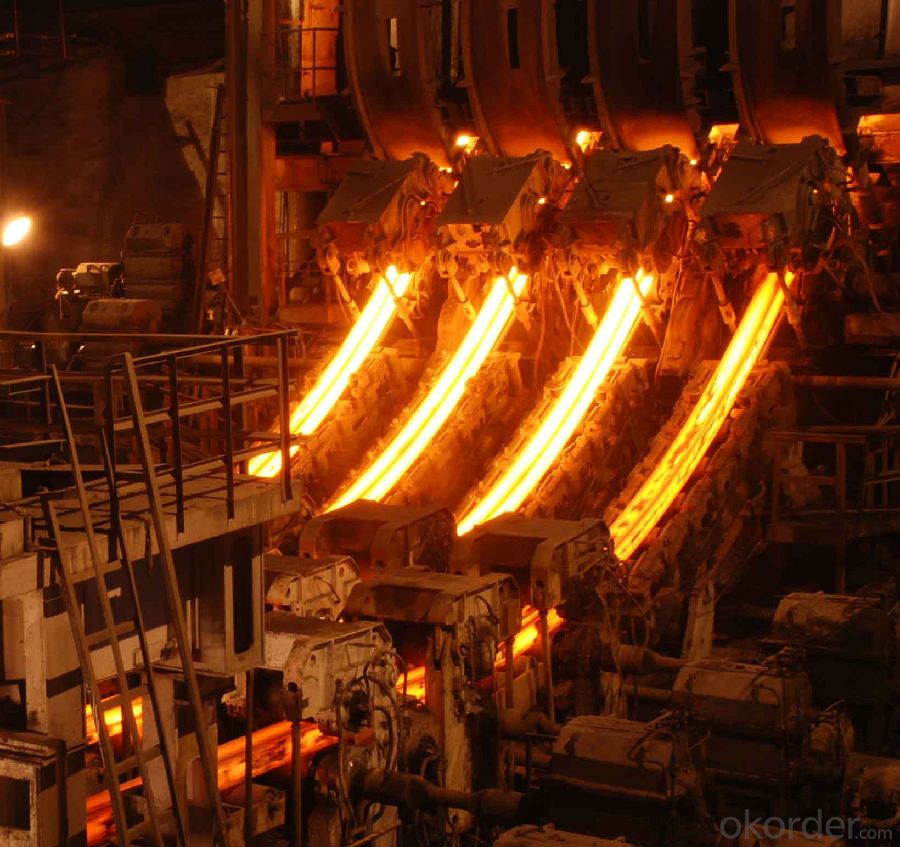
Main Feature Square Steel Billet Q235/3SPGrade Prime Quality 10#
Raw elements(C,Fe,Ni,Mn,Cr,Cu.)---Smelted ingots by AOD finery---hot rolled into black suface---pickling in acid liquid---cold drawn----polished by automatically machine--- cutting into pieces---checking quanlity
Applications of Square Steel Billet Q235/3SP Grade Prime Quality 10#
Widely Used in the areas such as Stainless Steel Fasteners, Chains, Kitchen and Sanitary wares, Furniture handles, Handrails, Electroplating and Electrolyzing pendants, Foods, Electron, Petroleum, Construction and Decoration, etc. Products have a high strength after cold-working. Electronic products parts, Medical appliance, Springs, Bus Inside and Outside packaging and building, Street Lamp Posts, etc. Decoration materials and Outdoor Publicity Billboard. Used for the products which have the Anti-Stress Corrosion requirement. Electron Products, Table-wares, Bolts, Nuts, Screen Meshes, Cumbustors and so on.
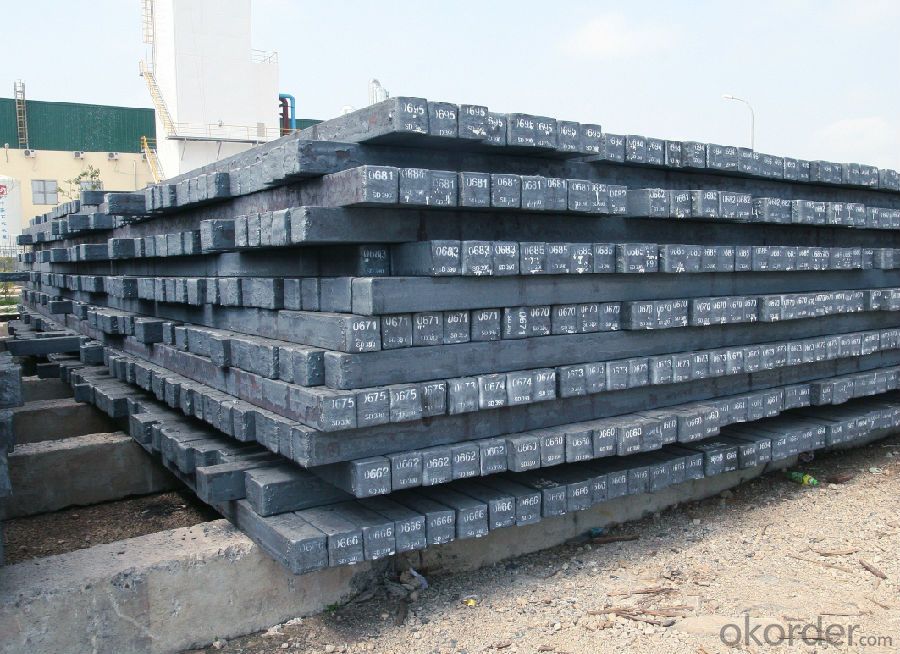
Specifications of Square Steel Billet Q235/3SP Grade Prime Quality 10#
| Standard | C(%) | Mn(%) | S(%) | P(%) | Si(%) |
| Q195 | ≤0.12 | ≤0.50 | ≤0.040 | ≤0.035 | ≤0.30 |
| Q235 | ≤0.20 | ≤1.40 | ≤0.045 | ≤0.045 | ≤0.35 |
| Q275 | ≤0.22 | ≤1.50 | ≤0.045 | ≤0.045 | ≤0.35 |
| 20MnSi | 0.17-0.25 | 1.2-1.6 | ≤ 0.050 | ≤ 0.050 | 0.40-0.80 |
| 3SP | 0.14-0.22 | 0.40-0.85 | ≤ 0.050 | ≤ 0.040 | 0.05-0.15 |
| 5SP | 0.28-0.37 | 0.50-1.00 | ≤ 0.050 | ≤ 0.040 | 0.15-0.30 |
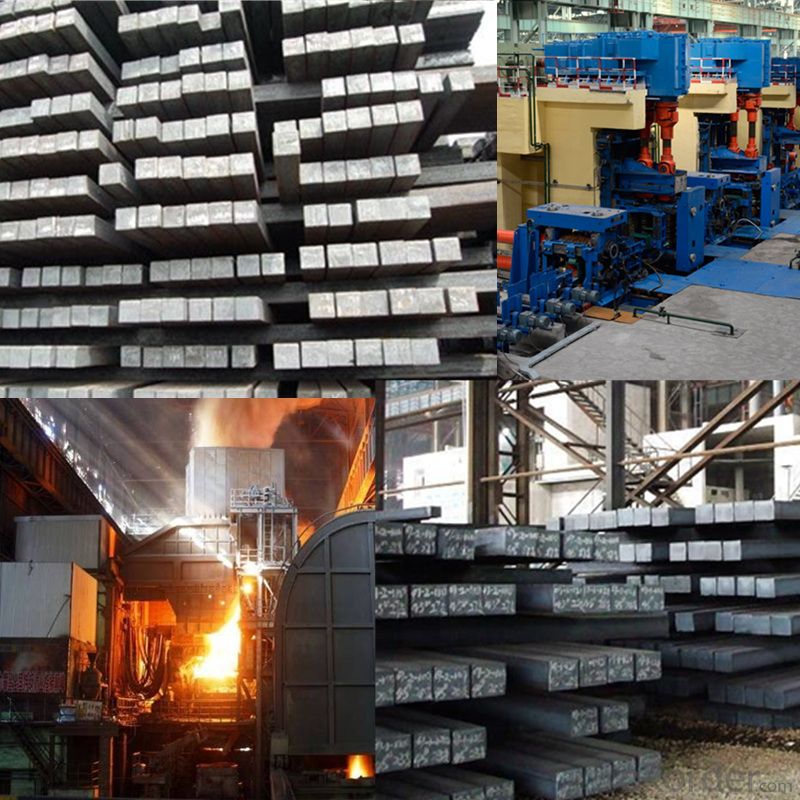
FAQ of Square Steel Billet Q235/3SP Grade Prime Quality 10#
We have organized several common questions for our clients,may help you sincerely:
1. How Can I Visit There?
Our company is located in Tianjin City, China, near Beijing. You can fly to Tianjin Airport Directly. All our clients, from home or aboard, are warmly welcome to visit us!
2. How Can I Get Some Sample?
We are honored to offer you sample.
3. Why choose CNBM?
Our delivery time about 15-20days for standard sizes, if you have other requirements like hardness, quanity and width ,it is about 20-40days. But don't worry we also try our best for the delivery time ,because time longer and our cost is higher.
- Q: What are the specifications for stainless steel billets used in the marine industry?
- Stainless steel billets used in the marine industry must adhere to specific specifications to ensure optimal performance and durability in harsh marine environments. These specifications typically include the following: 1. Material Composition: Stainless steel billets for marine applications are usually made from austenitic stainless steel grades such as 304, 316, or 316L. These grades offer excellent corrosion resistance, high strength, and good weldability. 2. Corrosion Resistance: The stainless steel billets must have high resistance to corrosion caused by saltwater, moisture, and other aggressive marine elements. They should exhibit excellent resistance to pitting, crevice corrosion, and chloride-induced stress corrosion cracking. 3. Mechanical Properties: The billets should possess sufficient tensile strength, yield strength, and elongation to withstand the demanding conditions encountered in the marine industry. These properties ensure that the stainless steel can handle the heavy loads, vibrations, and impacts experienced at sea. 4. Heat Treatment: Proper heat treatment processes, such as annealing, may be required to enhance the stainless steel's mechanical properties and corrosion resistance. Heat treatment can also eliminate residual stresses and improve the material's toughness. 5. Surface Finish: The surface of the billets should be free from defects, such as cracks, pits, and inclusions, which could compromise the structural integrity or promote corrosion. A smooth, polished surface is often desired to minimize friction and facilitate easier cleaning. 6. Dimensional Tolerance: Stainless steel billets used in the marine industry must adhere to specific dimensional tolerances to ensure compatibility with other marine components and facilitate ease of manufacturing and assembly. 7. Certification: Billets for the marine industry may need to meet various certification standards, such as ASTM, ISO, or specific industry standards like the American Bureau of Shipping (ABS) or Det Norske Veritas Germanischer Lloyd (DNV-GL) certifications. These certifications ensure that the stainless steel meets the required quality and safety standards. Overall, the specifications for stainless steel billets used in the marine industry focus on corrosion resistance, mechanical properties, heat treatment, surface finish, dimensional tolerances, and adherence to relevant certifications. These specifications ensure that the stainless steel billets can withstand the harsh marine environment, prolonging the lifespan of marine structures and components.
- Q: What are the main challenges in the quality control of steel billets?
- The main challenges in the quality control of steel billets include several factors that can affect the final product's quality and performance. Here are some of the key challenges: 1. Chemical Composition: Ensuring the accurate chemical composition of steel billets is crucial as it determines the material's strength, durability, and other mechanical properties. Maintaining consistent chemical composition is challenging due to variations in raw materials, melting processes, and the presence of impurities. 2. Homogeneity: Achieving uniformity in the microstructure and composition throughout the steel billet is essential. Inadequate mixing or non-uniform cooling can lead to inconsistencies, resulting in weak spots and uneven mechanical properties. 3. Defect Detection: Identifying and eliminating defects in steel billets is essential to prevent failures during subsequent processing and usage. Common defects include cracks, inclusions, segregation, porosity, and surface irregularities. Detecting these defects accurately and in a timely manner can be challenging due to the size, complexity, and location of certain defects. 4. Dimensional Accuracy: Consistency in the dimensions and shape of steel billets is crucial for their further processing and use in various applications. Maintaining precise dimensions requires controlling variables such as casting speed, cooling rates, and mold design. 5. Surface Quality: The surface condition of steel billets is critical for subsequent operations like rolling, forging, or machining. Ensuring a smooth, clean, and defect-free surface is challenging due to factors such as scale formation, oxidation, decarburization, and surface contamination during handling and storage. 6. Heat Treatment: Proper heat treatment is often necessary to achieve the desired mechanical properties in steel billets. However, controlling the heating and cooling rates, as well as the soaking times, can be challenging due to variations in equipment, temperature monitoring, and quenching techniques. 7. Traceability: Maintaining traceability and documentation throughout the production process is crucial for quality control. Tracking the origin of raw materials, process parameters, testing records, and certifications can be challenging, especially in complex supply chains. Addressing these challenges in the quality control of steel billets requires a combination of advanced testing techniques, robust process controls, skilled personnel, and continuous improvement initiatives.
- Q: How are steel billets used in the production of transmission towers?
- Steel billets are used in the production of transmission towers as the raw material for manufacturing tower sections. These billets are cut, shaped, and welded to create the structural components of the towers, ensuring strength, stability, and durability in supporting electrical transmission lines.
- Q: How are steel billets used in the manufacturing of rail tracks?
- Steel billets are used in the manufacturing of rail tracks as they serve as the raw material for the production of rails. These billets are heated and then rolled into the desired shape and size to create the rails. They provide the necessary strength, durability, and stability required to withstand the heavy loads and constant wear and tear experienced by rail tracks.
- Q: How are steel billets used in the manufacturing of food processing equipment?
- Steel billets are an essential component in the manufacturing of food processing equipment. These billets, which are semi-finished steel products, serve as the raw material for the fabrication of various components and parts required in the construction of food processing machinery. Firstly, steel billets are used to create the main structural frame of the equipment. The strong and durable nature of steel makes it ideal for providing the necessary strength and stability to support the entire machinery. The billets are cut and shaped into the desired dimensions to form the framework, ensuring that it can withstand the rigorous demands of industrial food processing. Moreover, steel billets are also used to manufacture specific components within the equipment. For instance, they are utilized to create cutting blades, grinding discs, and mixing paddles that are crucial in the food processing process. These components need to be robust and resistant to wear and corrosion, and steel billets offer the ideal material to meet these requirements. In addition, steel billets are often used to construct food processing equipment that requires high levels of hygiene and cleanliness. Stainless steel billets, in particular, are favored in such applications due to their inherent resistance to rust and corrosion. These billets are used to fabricate parts that come into direct contact with food, such as storage tanks, conveyors, and mixing chambers, ensuring that the food processing equipment is safe and hygienic. Furthermore, steel billets are employed in the manufacturing of heat exchangers and boilers used in food processing. These billets are designed to withstand high temperatures and pressure, making them suitable for applications that involve cooking, sterilization, or pasteurization of food products. In conclusion, steel billets play a crucial role in the manufacturing of food processing equipment. From providing structural support to fabricating specific components, they contribute to creating robust, efficient, and hygienic machinery that is essential for the food industry.
- Q: How are steel billets used in the construction of bridges?
- Steel billets are used in the construction of bridges as raw materials for manufacturing various structural components such as beams, columns, and girders. These billets are heated and then rolled into the required shapes and sizes to form the framework of the bridge. They provide strength, durability, and load-bearing capacity, enabling the bridge to withstand heavy traffic and environmental forces.
- Q: What is the role of steel billets in the manufacturing of automotive body panels?
- Steel billets play a crucial role in the manufacturing of automotive body panels. These billets, which are essentially semi-finished metal products, serve as the starting material for the production of various components that make up the body of a car. The primary reason steel billets are used in this process is because of their excellent strength and durability. Automotive body panels need to withstand various external forces and impacts, such as collisions, extreme weather conditions, and everyday wear and tear. Steel, being a strong and rigid material, provides the necessary structural integrity to ensure the safety and longevity of the vehicle. Furthermore, steel billets offer versatility in terms of design and customization. They can be easily molded and formed into different shapes and sizes, allowing manufacturers to create body panels with precise specifications. This flexibility enables the production of various car models with distinct designs, meeting the diverse demands of consumers. Steel billets are also preferred for their cost-effectiveness. Steel is a widely available and relatively inexpensive material, making it a practical choice for mass production. Moreover, its recyclability further reduces production costs and minimizes environmental impact. In summary, the role of steel billets in the manufacturing of automotive body panels is crucial. They provide the required strength, durability, versatility, and cost-effectiveness necessary for the production of high-quality and reliable car bodies.
- Q: What are the different types of steel billet rolling mills?
- The steel industry utilizes various types of steel billet rolling mills to shape and size heated steel bars known as billets. Some commonly used mills include: 1. Two-high rolling mills: These mills feature two rolls positioned vertically. Pressure is applied to the billet as it passes between the rolls, shaping the steel to the desired form. 2. Three-high rolling mills: These mills have three rolls, with the middle roll being larger in diameter than the top and bottom rolls. The billet is passed through these rolls, with the middle roll applying the majority of the shaping pressure. 3. Four-high rolling mills: These mills consist of two smaller rolls positioned above two larger rolls. The billet is first passed through the smaller rolls, shaping the steel, before being further refined by passing through the larger rolls. 4. Cluster rolling mills: In this type of mill, multiple rolls are arranged in a cluster. The billet is passed through these rolls, which apply pressure from various angles and directions, shaping the steel. 5. Tandem rolling mills: These mills are composed of multiple stands of rolling mills arranged in a tandem configuration. Each stand performs a specific shaping operation on the billet, and the billet is sequentially passed through each stand until the desired shape is achieved. 6. Continuous rolling mills: Designed for high-volume production, these mills operate continuously. The billet is fed into the mill without interruption, and the rolls continuously apply pressure to shape the steel as it passes through. Each type of steel billet rolling mill offers its own advantages and is suited for specific applications within the steel industry. The choice of mill depends on factors such as the desired final product shape and size, production volume, and the specific requirements of the steel being processed.
- Q: How do steel billets contribute to the automotive industry?
- The automotive industry heavily relies on steel billets as the primary raw material for manufacturing different automotive components. These components, including engine parts, transmission systems, chassis, suspension systems, and other critical parts, are crucial for ensuring the safety, performance, and durability of vehicles. A significant contribution of steel billets to the automotive industry lies in their exceptional strength and durability. Steel is widely known for its high tensile strength, which enables it to withstand extreme forces and provide structural integrity to automotive components. This strength is particularly crucial in areas such as the frame, where it ensures passenger safety in the event of a collision. Moreover, steel billets offer excellent formability and versatility, allowing manufacturers to create intricate and complex automotive parts with precision. This enables the production of components that meet the specific design requirements of different vehicle models, ensuring optimal performance and functionality. Another advantage of steel billets is their cost-effectiveness. Compared to alternatives like aluminum or carbon fiber, steel is a relatively affordable material. Its widespread availability and production efficiency make it an economical choice for mass production, helping to keep vehicle prices reasonable for consumers. Furthermore, steel billets possess excellent heat resistance and thermal conductivity properties, making them ideal for use in engine components, such as pistons and cylinder heads. They can withstand high temperatures and efficiently transfer heat. Additionally, steel billets contribute to the sustainability of the automotive industry. Steel is highly recyclable, with a recycling rate of around 90%. This allows for the eco-friendly disposal and reuse of steel components, reducing the environmental impact of the automotive manufacturing process. In conclusion, steel billets play a crucial role in the automotive industry by providing the necessary strength, durability, formability, and cost-effectiveness for manufacturing various automotive components. Their versatility and recyclability further contribute to the sustainability of the industry. Without steel billets, the automotive industry would face challenges in producing safe, reliable, and affordable vehicles.
- Q: How are steel billets used in the production of mining equipment?
- Steel billets are used in the production of mining equipment as they serve as the raw materials for various components such as gears, shafts, and structural frames. These billets are shaped, machined, and welded to create strong and durable parts that can withstand the harsh conditions of mining operations.
Send your message to us
Square Steel Billet Q235/3SP Grade Prime Quality 10#
- Loading Port:
- Tianjin
- Payment Terms:
- TT OR LC
- Min Order Qty:
- 2000 m.t
- Supply Capability:
- 50000 m.t/month
OKorder Service Pledge
OKorder Financial Service
Similar products
Hot products
Hot Searches
Related keywords
